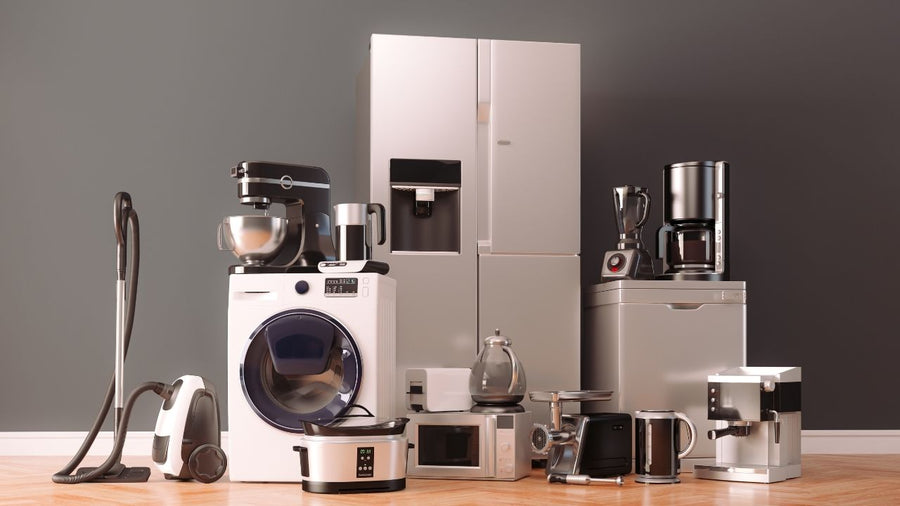
Appliances for the kitchen have transformed the way we live, growing from basic necessities into sophisticated tools that reflect technological advancements and modern lifestyle demands. Gone are the days when kitchens were simply finds.ir spaces. Today, they serve as the heart of the home, a place for culinary creativity, social gatherings, and innovation. From refrigerators to smart ranges, the world of appliances for the kitchen has seen remarkable progress during the last century. This article delves into the development of these crucial devices, examining how their development has influenced not only the way we cook but also how you live, work, and interact in our homes.
At the start of the the twentieth century, appliances for the kitchen were manual, standard, and often labor-intensive. The cooker, for example, required wood or coal to be lit, and cooking was a time-consuming process. Refrigeration, if available, was standard, often relying on blocks of ice to keep perishable goods fresh. Washing dishes and clothes were manual tasks, carried out in large basins with water heated on the cooker. These early appliances were functional but far from convenient. However, as electricity became more accessible in homes, the development of electrically powered appliances begun to revolutionize domestic work.
The 1920s and 1930s witnessed a spike in appliance innovation, with electric ranges, refrigerators, and automatic washers becoming more mainstream. These early electric appliances greatly reduced the physical labor involved in cooking and cleaning, marking the beginning of the modern kitchen. Refrigerators, in particular, allowed for better food maintenance, which changed the way people shopped and stored food. The electric cooker made cooking faster and more efficient, while automatic washers took over the arduous task of washing. The kitchen, once a center of manual labor, was slowly becoming a place of efficiency and convenience.
In the mid-20th century, appliances for the kitchen took another leap forward with the introduction of more automated devices. The microwave, which emerged in the late 1940s and gained popularity in the 60s, revolutionized meal preparation. No longer were home cooks bound by the slow processes of traditional ranges. The microwave allowed for fast cooking and reheating, drastically reducing the time required to prepare meals. Alongside the microwave, other small appliances like blenders, toasters, and coffee makers became common, further enhancing the convenience and versatility of the kitchen.
The late the twentieth century saw the rise of appliances for the kitchen designed for the growing interest in gourmet cooking and healthy eating. High-end blenders, food processors, and juicers begun to can be found in home kitchens, catering to the growing demand for more complicated and nutritious meals. Additionally, dishwashers became extremely effective and quieter, making them a staple in most homes. These appliances not only saved time but also allowed home cooks to research new techniques and ingredients, bringing a more professional touch to home-cooked meals.
Even as entered the 21st century, the kitchen became a centerpiece for smart technology. The rise of smart appliances, linked to the internet and controlled by touch screen phones or voice assistants, has had kitchen innovation to a new level. Smart refrigerators with touchscreens allow users to keep track of household goods, suggest recipes, and even stream entertainment while cooking. Smart ranges can be preheated remotely, while precision cooking devices like sous-vide machines ensure perfect results every time. These technologies are made to make cooking extremely effective, enjoyable, and personalized.
Sustainability in addition has be a significant trend in the development of appliances for the kitchen. Modern dishwashers, refrigerators, and automatic washers are made to use less water and energy, aligning with the growing knowing of environmental concerns. Appliances are now rated for their energy efficiency, and individuals are increasingly choosing products that lessen their h2o and impact. The incorporation of sustainable materials and the push towards longer-lasting, repairable appliances is also reshaping the market, with manufacturers responding to the demand for greener products.
The appearance of appliances for the kitchen have likewise underwent a transformation. Once purely functional, appliances are now designed to blend faultlessly with the modern kitchen’s sleek, minimal aesthetic. Steel, glass, and matte finishes have become popular, giving appliances a stylish, contemporary look. In open-concept homes, where the kitchen is often visible from living areas, appliances are now as much about design as they are about function. This shift demonstrates the growing incredible importance of the kitchen as a social space, where both form and function are paramount.
In addition to their role in cooking and cleaning, appliances for the kitchen are now central to wellness. From air fryers that offer a healthier alternative to deep-frying to juicers that produce fresh, nutrient-rich juices, modern appliances are made with health-conscious consumers in mind. The growing trend of meal readying in addition has led to the popularity of appliances like multi-cookers, which allow for portion cooking and convenient storage. They cater to busy lifestyles, enabling individuals to maintain healthful eating without spending hours in the kitchen.
The future of appliances for the kitchen promises even more innovation. With advancements in artificial brains (AI), we can expect appliances that study from user preferences and habits, further automating the cooking process. Imagine a kitchen where your stove suggests dinner based on what’s in your chiller, or a coffee brewer that brews your perfect cup based on your morning routine. The integration of AI and machine learning into appliances for the kitchen is positiioned to make cooking and home management more intuitive and effortless.
In conclusion, appliances for the kitchen attended a long way from their simple inception. They have evolved from basic tools of necessity to smart, efficient devices that reflect modern living. As technology continues to advance, the kitchen will likely remain at the front of innovation, continuing to shape the way we cook, eat, and live. Whether it’s through automation, sustainability, or design, the future of appliances for the kitchen can be as exciting as it is transformative.